


Neural it's an Italian daily updated site on new media art, electronic music and hacktivism, quarterly printed as magazine.
This is the English content section, with daily updated link and regular new articles and reviews.
essays
new:
Aphasia and Parrhesia: Code and Speech in the Neural Topographies of the Net
Virus charming and self creating codes
articles
The Thing Rome censored.
Computers, Freedom and Privacy 2000.
Forbidden Technology.
interviews
new:
Bruce Sterling - Dead Media
William Gibson - Aidoru
Mark Frauenfelder - Wired
Geert Lovink - Future of media
In The Nursery - Sounds and Pictures
Mouse on Mars - Testing Sound Languages
RTMark - Hacktivism
SpeedyJ - Painting Music
Scanner - Advanced Audio Projects
Sergi Jorda - F@ust Music Online
[The User] - Symphony for dot matrix printers
Dj Spooky - Sampling Semiotic
Benge - Home Computer Sounds
Marcos Novak - Transarchitectures
Mark Amerika - Electronic Language
Ian Clarke - Freenet Project
Visit also (in Italian):
Neural daily news and reviews
Neural magazine
Neural station
translations:
Roberto Orsini
New link.
Check the news archive (more than 1600 news)
new media art | emusic | hacktivism
.art
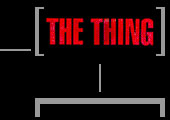
30.12.02 Verio threatens to close The Thing.
According to a notice released by RTMark, the provider Verio, yielding to pressures made by Dow Chemical Corporation, caused by a joke site against it (see the satirical site of the Dow Chemical Corporation), has decided to rescind the contract stipulated with The Thing, historic association of electronic artists and net.artists which has been active for more than ten years, spans half the world and is based in New York. Verio gave a notice to The Thing saying they have 60 days to move somewhere else all of their services, including those offered to the PS1/MOMA gallery, to the magazine Artforum, and to the Nettime mailing list. A furious (with good reasons) Woflgang Staehle, director of The Thing, has declared: "They could have resolved this matter directly with the owners of that particular site without cutting the connectivity to our entire network... besides damaging our enterprise, this action establishes a dangerous precedent for the freedom of expression on the Net". For this reason, too, the future strategy will be to manage a block of IP addresses and hosting them on different providers, to avoid similar problems in the future. The amount to pay for this project is 25.000 dollars, which the association hopes to collect through donations.
.art
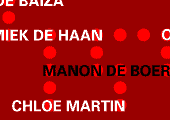
29.12.02 PanoramicPortraits, web-build identities. [it].
.art
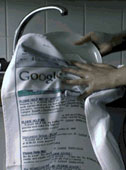
29.12.02 Dot-store, new economy's fetishes. [it].
.emusic

29.12.02 Billboards that listen to cars' radio equipment. [it].
.art
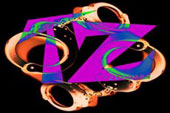
24.12.02 VideA_02, no_profit vj culture in Barcelona..
Barcelona once again confirms itself as the "capital" of multimedia electronic creation and, pushed by the sparkling audiovisual scene which characterise it, nourished by international meetings, especially Sonar, gives birth to new expositional platforms. In this context is VideA, a two days long festival dedicated to audiovisual works and new technologies, which takes place on December 20 and 21, in the seventeenth-century Cupula de Venus (but at night it will move to a "secret place"). Having reached its third edition, VideA is one of the few festivals totally dedicated to the emerging a/v culture. With the motto no_sponsor_no_profit, VideA was conceived by Telenoika, a cultural association in Barcelona which draws its inspiration from the concept, elaborated by Roy Ascott, of telenoia. Telenoia has substituted the paranoia of the individualistic society in the telematic culture. The vjing presented (Slidemedia, Rotok, Videotone, -electric violence+) is primarily based on a performatory interaction between vj and dj: an audiovisual relationship created at the very moment of the live performance, like the mutual understanding between players of different instruments, and fundamentally sustained by the rythmic schemes and the practices of sampling, repetition and loop. The festival, however, has got other interesting aspects. Among the participants there are, for instance, Mia Makela and Pedro Soler's fiftyfifty, a collective with the purpose of exploring and divulging the limits of digital creation. And Pedro Soler was one of the members of the Softarama program committee, the most innovatory section of the latest Sonar. The program of VideA also includes the showing of social and political criticism videos (guerrilla news network, indymedia.org), paying particular attention to the voices coming from Latin America (Honduras, Argentina). Also, it's worth pointing out the participation of two emerging names in the italian landscape of videoart and audiovisual experimentation: Elastic, from Rome, who will present three videoinstallations, and Otolab, from Milan, who will present "quartetto.swf", the visual techno-concert for four laptops, winner of the Italian Live Media Contest.
Lavinia Garulli
.hacktivism
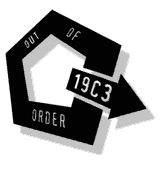
24.12.02 19C3, Out Of Order: Chaos Communication Congress 2002. [it].
.art

24.12.02 SeeYou.SeeMeNot, image obsession. [it].
.emusic
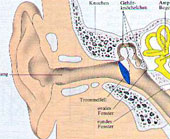
24.12.02 MP3 dangerous for ears?. [it].
.art
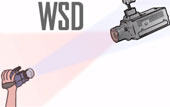
24.12.02 World Sousveillance Day. [it].
.art
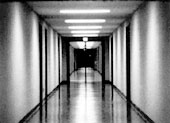
21.12.02 EG Serene, a software for reformalizing the time structure of videos.
'EG Serene' is the last software by Barbara Lattanzi, prolific author of programs which conceptually process video sequences. Her work is based on the movie 'Serene Velocity', by the artist Ernie Gehr, made in 1970, and algorithmically formalizes its time structure, which is afterwards applied on the desired video. For Lattanzi, it's a matter of making 'open-source' the very structure, in a sort of 'reverse engineering' of the schemes adopted by Gehr. In fact, what is made concrete is the possibility to explore one's own sequences in a temporal way, investigating the 'resonating frequencies' which reveal themselves when the time structure is reformalized. 'EG Serene' is available for free downloading for Mac and PC, as well as in pure copylefted source code, like her previous works AMG Strain and Surface Tension.
.art
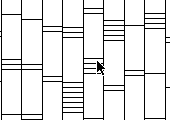
21.12.02 Reed Kram, the computing aesthetic. [it].
.emusic
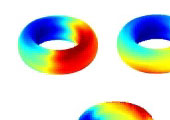
21.12.02 The melodies in the brain. [it].
.hacktivism
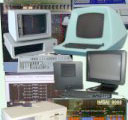
21.12.02 Digital treasure saved by vintage tech. [it].
.art
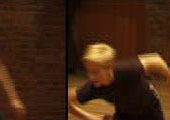
20.12.02 Greylines 00-06 and Hyperchoreography, new Scottish software art.
The always active New Media Scotland presented two new software art projects. Greylines 00-06 is developed by Slateford (Simon Yuill and Tryggve Askildsen) and it's a series of six interactive animations in Shockwave (freely downloadable) composed exclusively with grey shades, to underline the tribute to Hans Richter ans Oskar Fischinger, who made experimental animations in the twentieth century, and to give some sort of artificial age to the so-called 'old-time code'. The smooth color shifts and hue-on-hue shadings, besides the retro feeling, bring with them memories and techniques of a technical past which expressed itself in similar ways both with the first attempts at mechanical work some decades ago, and with the first personal computers, with their obvious computational limits. Katrina McPherson and Simon Fildes, on the other hand, formulate with 'Hyperchoreography' a performatory space dedicated to dance which finds its raison d'etre in a networked interactive medium. In fact, however the editing of a work of video-dance is made, only one of thousands of combinatorial possibilities comes true, and parts are discarded which are as interesting as those selected. Afterwards, the loops are connectable by the user in new juxtapositions which make the process public and openly shareable.
.art
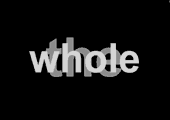
20.12.02 My Voice, making a stranger's voice the author's one. [it].
.emusic
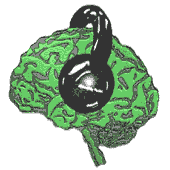
20.12.02 Binaural sounds' interactive tests [it].
.hacktivism
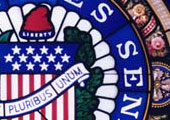
20.12.02 The anonymizer of the USA Senate [it].
.art
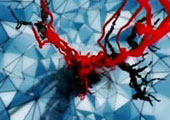
19.12.02 Tom Thumb, generative video.
Tom Thumb is a short film, created by Alex Evans, which reproduces some generative characteristics. The meaning given by the author to this process is to change some characteristics of the video itself each time it's rendered by the computer. Varying more or less perceptibly are details not at all negligible, such as the background music, written in C and based on patterns which degrade as the movie goes on. In this three minutes long 'generative.film', trees and branches, too, are calculated with fractal and genetic algorithms with randomly chosen parameters. Even the superimposed faces (of two actors who recite the classic 'Tom Thumb') are systematically extracted from 3 hours of footage and the words are rearranged according to Markov chains. On the site you can download the software for generating the movie at home (which takes something like 8 hours on a standard PC) and one of the many possible generations encoded in Quicktime. Once again, under the spotlight there's the loss of control by the artist on his work, left at the mercy of the machine's random choices according to unique and unrepeatable parameters.
.art
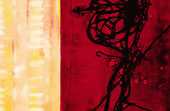
19.12.02 reFresh:reLoad, savescreen as exhibition [it].
.emusic
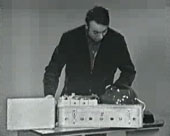
19.12.02 Bruce Haack: The King of Techno [it].
.hacktivism

19.12.02 Another Chinese net activist arrested [it].
.art
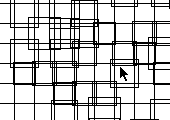
18.12.02 Grids, perspectives of a matrix.
A grid, even if basic to the essential, represents, in its interlacement of knots and junctions, the most classic metaphor of the net and its almost endless combinatorial possibilities. Interpreting it in a multifaceted and amused way is Suzung Kim, who made the work 'Grids' for the corean Art Center Nabi. In a style reminescent of John Maeda's joyful human-computer interfaces, different prespectives are presented which interpret the matrix as pixels of an icon, combinations of cartesian coordinates, liquid set of identical geometric shapes, recursive multidimension, group of basic particles for constructing an alphabet and ideal structure for housing a musical sequencer. Each facet is programmed with Shockwave and requires the user's active collaboration to reveal all its stunning vivacity.
.art
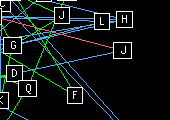
17.12.02 If (Monologue), Vietnamese web poetry. [it].
.emusic
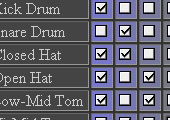
17.12.02 Drum Pattern Programmer. [it].
.hacktivism
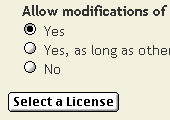
17.12.02 Creative Commons, licenses for free distributing your work and protect it. [it].
.hacktivism

17.12.02 Television sets liberated: televiewers on strike + Eterea, a meeting of street TVs.
The self-proclaimed "televiewers union" has organized on Friday, December 13th 2002, a National Televiewers' Strike, telling to those who want to adhere to leave their TV sets switched off and go out carrying the remote control with them. In Milan, particularly, there will be meetings on a bus (the number 30) and a party at the Ponte delle Gabelle with discounts for anybody who brings his remote control, with the slogan 'free everybody's free time... for becoming aware of what we don't see when we watch TV". The next goal proposed by the association is the 'Bill of televiewer's rights'. At the same time, at the TPO in Bologna, on December 14th, there will be the Eterea, general meeting of street TVs which, as well as reflecting on the mess that the italian public television has become, encourages to take the responsibility of disobedience by joining the many micro-stations which have already begun transmitting, from Trieste to the one of Termini Imerese, confiscated by the police some days ago, to the first one, Orfeotv in Bologna, which has brought together around the Telestreet project enthusiastic media-activists and technicians who have shared their knowledge for building their own communication infrastructures.
.art
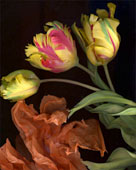
17.12.02 Flowers, photographic art with a scanner. [it].
.emusic
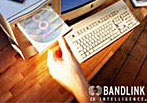
17.12.02 Bandlink, the cds that tell all about you. [it].
.hacktivism
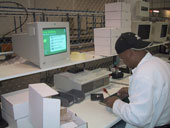
17.12.02 Digital Partnership, aristocratic computer benficence in the Sud Africa public schools [it].
.hacktivism
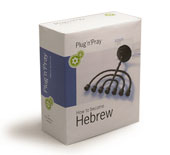
13.12.02 Plug & Pray, choose your religion.
Developed both in italian and in english, thus revealing its geographic location, Plug & Pray is a successful joke site which, behind the appearance of an imaginary corporation ('Holy Soft'), proposes perfectly packaged and serious-looking software kits for changing religion in case of need. The packages formally include the most popular faiths (Christianity, Judaism, Hinduism, Islamism and Buddhism) and should include the respective sacred texts on cd-rom, some 'cards' for quickly distinguishing ceremonial paraments, a hardware board for accelerating one's performances and codes for accessing the help desk, the information services and the 'tips from the experts' section. Besides the standard kit, there are also deluxe kits which, as well as having personalized packages, include the access codes for the 'premium' version of the site. The offer is completed by the 'switch' kits for multifaceted realities, such as 'Palestine' (jewish-muslim) and 'Ulster' (catholic-protestant). Formalizing the social and political products of religious faiths in the forms of the immaterial industry, this operation effectively communicates both the strategically political and control-keeping role of the faiths themselves and their growing transformation in an 'advanced tertiary service' which permits, like the national languages, to communicate with other realities by temporarily adapting their interests/goals to one's own beyond the mystical aspects. Although the authors of this site couldn't resist to adding another kit named 'Prega Italia', which makes fun of the similarly named political party, they unfortunately end their joke at the ecommerce order form page, which asks the customer to buy one of the member's t-shirts instead.
.art
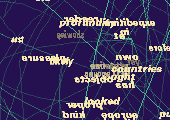
14.12.02 Valence, the informations and their interactions [it].
.art
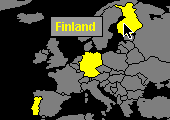
14.12.02 Axis, virtual economic alliance between states [it].
.emusic
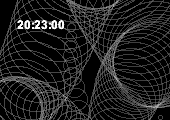
14.12.02 Servovalve.org, sonographic tunes [it].
.emusic
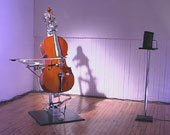
13.12.02 Cello, robotic sound art.
Beatriz da Costa is an artist who explores the possibilities of robot art, and at the same time is fascinated by sound. Her 'Cello' integrates interactivity and autonomous behaviours with the motion which differentiates robotic scupltures from other kind of sculptures. In fact, the cello, if played by a suitably programmed mechanical arm, varies its performance according to a computer-generated sound wave and to the position of the listener. The note emitted by the PC is used by the robotic arm to tune the instrument. A computer equipped with a microphone compares the two sounds and the instrument is rotated or the angle of the bow is changed accordingly, until the tuning is perfect. Then, the instrument itself plays some phrasings by self-manipulating its physical elements. Those phrasings, too, are monitored and repeated until the software judges them correct. The sensing of an excessively near presence stops all operations, communicating the annoyance of someone who was distracted while concentrating on something and, if this presence persists, the software puts the instrument out of tune, and restarts again from the beginning. The video, viewable on the site, shows these behaviours and demonstrates once again the unsuppressable human desire to create other forms of intelligence, which in this case interact with one of the most indisciplinable elements of his sensitiveness: music.
.art
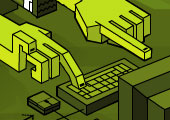
13.12.02 Pix Festival, Lille's digital artists' party [it].
.art
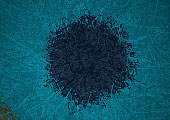
13.12.02 Doublecell, genetic web art [it].
.emusic

13.12.02 V_, vjing festival in Milan [it].
.art

12.12.02 Generative Art and Design Conference.
On December 11th, at the Politecnico of Milan, will begin the the fifth international conference about Generative Art, directed as always by Celestino Soddu. It'll last three days and will feature a very dense schedule of seminars and presentation from all over the world on a subject, that of automated generation of artifacts, which attracts more and more researchers around it, people who can devise algorithms and procedures approaching this problem in many vastly different ways. The sessions will thoroughly analyse the application of generative paradigms to architecture, music and art, mixing reports by university teachers, including the one by Giulio Gioriello, with 'poster' sessions by experimenters and artists who have been conducting their fruitful researchs outside the academy, such as Zeljko Blace, of the Zagreb Multimedia Institute, and the italians Domiziana Giordano, a member of Digital Sisters Indeed, Claudio Parrini, Ferry Byte and Mirella Castigli. This year's edition will also feature evening performances, starting at 20:00 in the Aula Magna, useful for experiencing the works in a perceptive dimension which drops for a moment their technical and theoretical implications and looks to their aesthetic side.
.art
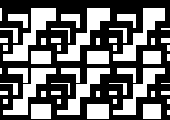
11.12.02 Poetrica, algebric post-poetry [it].
.art
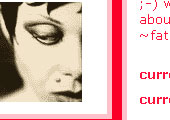
11.12.02 DiaryU, five different blogs, same writer [it].
.hacktivism
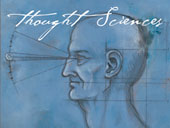
11.12.02 Neuromarketing: brain scanners to tune advertising [it].